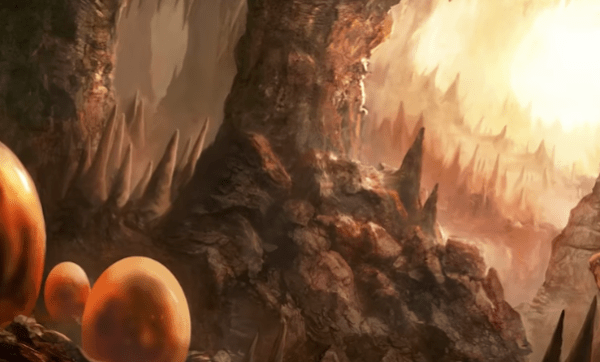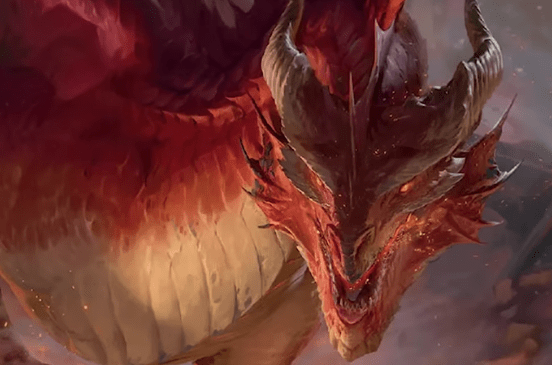A crucial part of any DnD Party outside of any other is that of the Healer. The Healer is mainly meant for what the name of the role says it does; Healing the members of the party. These are usually relatively weak in terms of their Hitpints & their Damage Output in the middle of a combat encounter.
However, plenty of different builds exist within Dungeons and Dragons that can be chosen by a player who wishes to be a Healer for their party. Whether they plan to accept the full conditions of choosing such a role or want to spice it up with a unique build. Here are my 12 best healer builds – in no particular order.
12. Way of Mercy Monk
The only Non-Spell caster on this list, the Monk is technically capable of being made into a Healer through the Way of Mercy through their melee capability. Starting at 3rd level, the Subclass is capable of “casting” Mending Hands without having the spell slots to do so, restoring the player’s Wisdom Modifier plus several rolled dice to the amount of the Monk’s Martial Arts dies.
The player can also use this ability through their flurry of blows as one of their “attacks” without having to spend a Ki point to be able to use the ability. This ability is upgraded and improved as the player puts more levels into the Monk Class. Not only will this be able to deal extra Necrotic Damage to enemies in the same manner as they would heal a player, but the ability would be capable of removing a condition or disease afflicting the target.
Along with being able to replace more than one portion of the flurry of blows with healing-friendly targets instead. As the final part of this Subclass’s abilities, once they reach level 17, they can bring back a being that has been dead for less than 24 hours and restore them to health by only spending 5 Ki points.
This Class uses its melee capabilities to do all of this, making it technically the least viable out of all of the classes mentioned on this list from here on out.
11. Celestial Warlock
Sometimes, a player who wishes to make a Warlock character will decide to flip the usual script of the Warlock being a darker being and will choose the Celestial as their Eldritch Patron over the other options it can pick from.
Choosing the Celestial Patron grants the Warlock an expanded spell list that grants them access to healing spells such as Cure Wounds, Revivify, and even Greater Restoration upon reaching the appropriate levels to cast such spells. Additionally, the Warlock gains a pool of d6 Die equal to their current level +1, which can be used to help with bursts of healing when they are rolled.
They also gain damage boosts to Radiant Damage, help with healing the party during a short rest, and can even use an ability gained at level 14 to bring yourself out of Death Saving throws, at the cost of being blinded until the end of their turn. All of this combined can make the Warlock an interesting Class to use for the role of the Party Healer, even if it seems a bit odd for the Class to fill said role.

10. Oath of the Crown Paladin
The Paladin; Unlike the previously mentioned Warlock, this Class is expected to be alongside Celestials and God-like beings almost daily. As such, hearing about the Paladin taking the Oath of the Crown to become a healer is interesting, as they don’t precisely heal the party outright but instead assist in preventing damage from being taken by other party members.
This is most prevalent in the 7th level ability “Divine Allegiance.” With this ability, the Paladin can use a reaction to target a creature within 5 feet of being attacked and substitute health for the attack instead of the target creature. This means that although the attack would be hitting the intended target, said the target would take none of the damage and would instead have the Paladin take the brunt of it through this ability.
There is at least one healing ability with this oath in the form of the Channel Divinity options, with each creature of the Paladin’s choice within 30 feet of them healing for a total number of Hit Points equal to 1d6+the Paladin’s Charisma Modifier. This Subclass is probably the closest to a Healer that the Class can get to without either multiclassing into better-suited classes for such a role or simply choosing a different primary class instead.
9. Circle of Dreams Druid
At this point, we have begun to get into the true spellcasting classes, as from here on out, the remaining items in this list are all true spellcasting classes. As such, the Druid will be starting this part off with the Circle of Dreams Subclass. However, nothing can be said about the Subclass that boosts any healing output for the caster.
Instead, the Circle of Dreams focuses more on aiding the party through other means and buffs instead of directly healing them, though the Druid as a Class does have access to healing spells like Mass Cure Wounds and Heal further down the line.
In addition, the Circle of Dreams Druid can grant a buff to their allies an additional +5 modifier to their Stealth and Perception checks. Finally, choose a single willing creature to teleport them to a position within 60 feet of them and finally cast either Dream, Scrying, or Teleportation Circle without having to cast a spell slot to be able to do so.
These abilities are not exactly healing the party but aid them through buffs and other various means.
While also having access to some high-level healing spells that other classes further down the list also have access to.
8. Alchemist Artificer
One would assume that a class such as an artificer would be able to become a healer through the powers of Alchemy and brew Health Potions for the party to be able to consume on their own time, whenever it is needed. However, this capability, gained through the Experimental Elixir ability, is not the only healing capability available to the Artificer.
Their expanded spell list grants them spells such as Healing Word and Mass Healing Word and also improves the elixir by granting the drinker 2d6 points of health restored, plus the Artificer’s Intelligence Modifier. Finally, the Artificer would be able to cast either Lesser Restoration, Heal or Greater Restoration without needing the materials, spell slot, or concentration needed to be able to do so.
However, this can only be done once per long rest, as long as they use their Alchemic Supplies as the spellcasting focus for the ability to work. Therefore, out of all the options available to the Alchemist Artificer, the Experimental Elixir is the most consistent item of healing for them once they reach level 9 in the Class.
7. Divine Soul Sorcerer
Outside the Wizard, the Sorcerer is the Class with the highest damage output, mostly dependent on the build the player chooses to go for with the Class and the spells are chosen for it. However, a player could also make their Player Character the Healer of the party, as by choosing the Divine Soul Subclass for the Sorcerer, the player is given a decent selection of options and abilities that can be used to aid the party.
The Subclass, right out the gate, allows the player to choose spells from the Cleric Spell List as they see fit, along with granting them the spell “Cure Wounds” should they choose a good alignment for their character. Not only that, but once the player reaches level six and then much later level 18, the player can spend Sorcery Points to be able to reroll dice used to determine restored HP from healing spells.
Along with being able to restore a total equal to half of the player’s maximum Hit Points if they are under the halfway point of their Health Pool (respectively listed). This Class is the closest a player can get to a Healer without taking the Cleric Class, which will be listed abundantly for the remainder of the list.

6. War Domain Cleric
Used more for boosting damage that deals any physical damage, the War Domain Cleric still has access to healing spells like any other Subclass for Cleric Does. Not only that, but the War Domain Cleric gains a defensive spell that acts more as a buff than an actual healing spell, which is the Shield of Faith spell.
Other than that, there isn’t much given to the War Domain Cleric outside of the usual healing spells the class gains in their spell list and the additional Shield of Faith spell.
5. Tempest Domain Cleric
In an almost identical camp to the War Domain Cleric, the Tempest Domain is used more for boosting spell damage than any healing capabilities. The only thing going for this is that it can be used more to buff other spells from allied forces rather than giving health points back, save from any of the healing spells chosen by the player from the Cleric Spell List.
This and the War Domain Cleric are only on this list because of the boost to damage either Subclass grants, thus giving the Cleric a bit more chance to survive than anything else.
4. College of Glamour Bard
To take a break from the Clerics, the Bard will now enter from Stage Left to provide buffs to the party through the various Fey Magic granted to them by the College of Glamour Subclass.
This College allows the Bard to grant party members temporary hit points and move its movement speed away from enemies, Charm, and/or use the Command Spell on enemies to do as the Bard wishes (to an extent). In addition, it can prevent enemies from attacking the Bard should they fail a Charisma Saving Throw against the Bard’s Spellcasting Save DC.
All of these things combined allow the College of Glamour Bard to be able to aid the party through small buffs to their health, along with changing the movements of the enemies to whatever the Bard wishes to have to happen, even if the choices made are sometimes slightly out of their control.
3. College of Lore Bard
While the College of Glamour allows the Bard to buff up the party and change the flow of combat in the party’s favor, the College of Lore grants the Bard a unique ability that only a few other classes have in store; The ability to choose spells from other class spell lists.
With the Additional Magical Secret ability, the Bard can choose two spells from any class spell list they wish to use, though it has to be at a level that the player can cast or a cantrip. This allows the Bard to choose healing spells from the Cleric Spell List and thus become a minor healer to the party.
The two Subclasses of Bard have access to their own healing spells, though with College of Lore helps the Bard fill the role a little better than the previously mentioned Subclass.

2. Grave Domain Cleric
An incredibly strange addition to the list, the Grave Domain for the Cleric Class is just as capable of healing the party as with the previously mentioned items in the list. However, this can take it a little further through Necromancy’s all-too-familiar art.
While this does boost a certain type of damage more than it does the healing: like the War and Tempest Domains, the Grave Domain Cleric cannot only gain spells that assist in raising the dead, like Revivify, Raise Dead, and Spare the Dying.
They can also take a critical hit inflicted by an enemy and convert it into a normal hit. Along with forcing a being’s soul to transfer itself from the original body to an ally, restoring Hit Points equal to a total gained through the Enemy’s Hit Dice being rolled.
The Grave Domain is the 2nd best for the Cleric, with the best Domain being the next subject of discussion.
1. Life Domain Cleric
The choice that most players would go for when trying to make a Cleric that needs to fill the role of the Party Healer, the Life Domain Cleric, is more than capable of filling the role of the Healer since that’s mainly what the Subclass was designed to do in the first place. With all sorts of healing spells added to their expanded spell list, such as Cure Wounds, Lesser Restoration, Revivify, and Mass Cure Wounds, the Cleric has a wider range of healing spells disposal than normal.
Not only that, but the Healing spells can also begin to affect the caster. Once the Cleric reaches level 17, they can use the maximum number possible for any roll that uses more than two dice to determine how many hit points a target restores.
This just shows that the Life Domain Cleric is the best option for a Healer, with the others mentioned throughout this list all as extra possibilities that a player can use should they wish to take a less-than-direct route to become a Healer.
Last words on best 5e Healer Builds
The Role of the Healer within a party is highly important for any Dungeons and Dragons Campaign, regardless of whether the Class and Subclass chosen are properly meant for it. The Cleric is indeed the most obvious choice.
Still, as shown in this list, other classes, such as the Monk, Warlock, and even the Artificer, can fill the role nicely without causing too many issues. So long as the player using this character decides to build their character around this idea.
